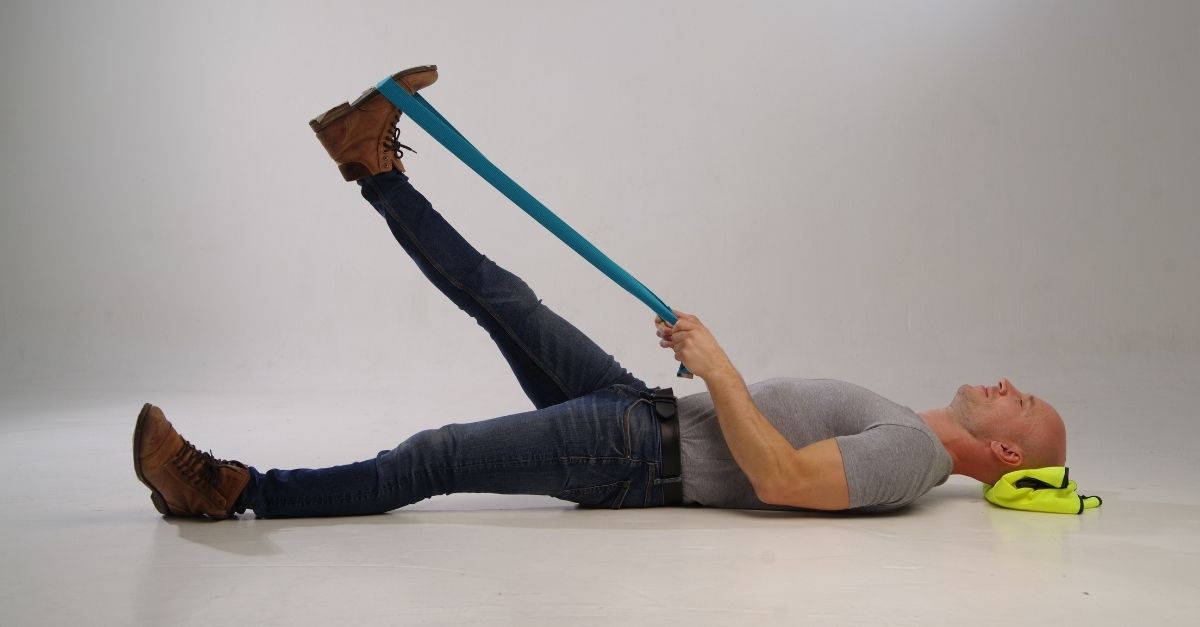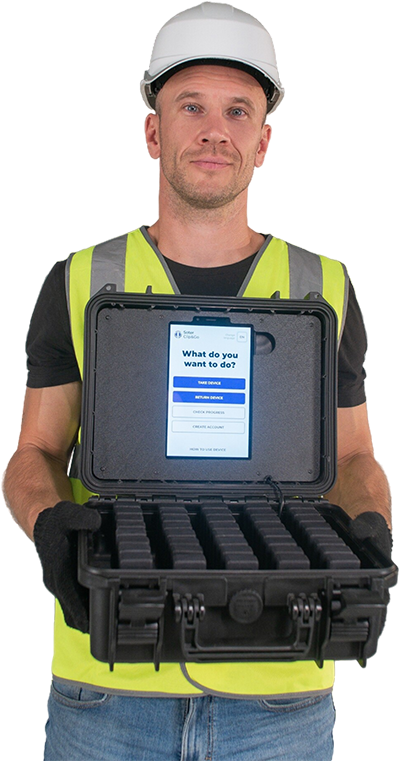The Power of Proprioception – A Vital Tool in Reducing the Risk of Musculoskeletal Disorders in the Workplace
Understanding proprioception can help to interpret how correct movement requires well organised accurate signals from the muscles firing to the brain. These pointers can be easily manipulated simply by becoming more aware of movement behaviour (5). Awareness of correct movement execution redistributes the signals decreasing the likelihood of injury (9).

Understanding proprioception can help to interpret how correct movement requires well organised accurate signals from the muscles firing to the brain. These pointers can be easily manipulated simply by becoming more aware of movement behaviour (5). Awareness of correct movement execution redistributes the signals decreasing the likelihood of injury (9).
There are numerous approaches around preventative interventions in ergonomics and manual handling, however the importance and specifics of movement awareness, and education around this, are often overlooked. Categorizing the risk factors for Musculoskeletal Disorders (MSDs) in the workplace into 3 parts; the individual, the task and the environment, provides an opportunity to focus on areas of risk, rather than isolated events. This article concentrates on one category, the individual, and the positive effect that developing proprioception can provide. It is a vital component to harvest in the pathway involved in reducing the likelihood of injuries. Putting effort into this area with workers can produce a favourable chain of events to injury prevention and can foster better outcomes across all 3 categories.
It was published by Liberty Mutual insurance in 2017 that workplace injuries and accidents cost U.S. employers $59.9 billion in 2014. The top three causes that represent half of the cost are overexertion, falls on the same level and falls to lower levels (4). Increasing proprioception can have a significant effect on all aspects of remaining safe in the workplace from sprains, strains, tendonitis and lower back pain to slips, trips and falls (3).
What is Proprioception?
Knowing the position of the body in space can be described as proprioception. It is the ability to be able to sense where any part of the body is positioned at any particular time without looking in a mirror or observing (6). A simple example would be to reach the arms out at 90 degrees with intention to have them exactlyin line with the shoulders holding perfect execution. This is generally achievable first attempt and if not, very little practice or awareness is required to accomplish it. However, performing the same exercise with the eyes closed takes away our vision sense and relies solely on ‘proprioception’. Another simple and easy way to test and cultivate proprioception is with standing balance practice; a requisite for having good balance and curtailing accidents (10). Standing on one leg, first with the eyes open and then closed and noticing the difference between the two scenarios. When eyes are closed, nerve impulses firing at the muscle and being transferred back to the brain for interpretation are heightened and trained (10). A simple and practical way to propagate proprioception levels and significantly decrease the risk of encountering slips, trips or falls; one of the top 3 causes of workplace injury.
How Exactly Does It Work?
Signals are received from the moving muscle or joints and then fed back to the brain for interpretation. These nerve impulses located within the skin, muscles and joints are called spindles and they move extremely fast, quicker than our visual sense. Spindles are super sensitive and can pick up a difference of .002 percent change in muscle length, therefore it is important for these afferent pointers to be precise and especially on Artist’s depiction of neurons in the brain. Gerd Altmann, Pixabay the mark when we are moving, particularly in stressful environments (5). It’s extremely helpful that these spindles can pick up changes much quicker than our visual sense as it is habitual to not look at our moving body part at the same time as lifting a box or moving in compromised areas. Thanks to these fast-paced impulses our attention is able to be on other things whilst moving. For example, when taking a walk and at the same time just missing the low-lying branch by a hairline in order to save our heads from danger. The body is relying on proprioception all the time (7). However, although it is a blessing that these rapid impulses fire so quickly, the downside is they are easily disrupted, and can sometimes be incorrect. In addition, they can change overtime due to different influences, therefore it is critical to regularly check and keep them trained.
Why Train Workers to Develop Their Proprioception?
At a simple level of interpretation, proprioception can be called body positional sense or awareness. Own perception of movement/position vs actual movement/position. It is common wisdom that high levels of proprioception require on-going training. Think of dancers, elite athletes and sports people and their ability to perform with precision; their proprioceptive sense has been exercised and developed and the feedback loops to the brain are aligned. They are aware of how they are moving, where their limbs, spine and all areas of their bodies are in space at any point in time and therefore have less chance of experiencing disablement (11).
Misaligned proprioception can cause imprecise joint placement, balance impairment, force interpretation faults; issues that immediately or in time can lead to MSDs. Many different factors can contribute to the signals transferring information inaccurately; including, injuries, chronic pain, long standing lazy or habitual faulty movement patterns or repetitive inaccurate technique (10).
Any injuries either undertaken at the workplace, during sport or at home have an impact on proprioception and inhibit the brain’s ability to process the sensory information that extends from the impaired joint or muscle and therefore require check in, reassessing or retraining after an event. Job/task variations that require new movement behaviour are also related opportunities to provide training of this awareness to prevent new injuries arising from a not yet familiar job role. When dealing with well imbedded long-standing faulty movement patterns or posture that overtime may cause injury, ongoing coaching in this area can help break into these patterns and create healthier pathways.
Training and Movement Behavioural Change
Any learning tools that augment movement awareness are the key to effective training. Disciplines that incorporate reminders, biofeedback, in-situ micro-learning, reflective processing, and cleverly integrated corrective and simple awareness exercises are some pedagogies to help the journey of reorganizing the neural pathways to realign muscles, joints and balance. Workplace learning around proprioception should be continual with monthly or biyearly reminders and retraining as well as check ins after injury or job role changes to prevent faulty movement patterns seeping in before they become imbedded and are harder to shift. Providing workers with education on a regular basis to advance this promotes a far greater chance of moving safely, improving performance and preventing injuries over the lifespan of a career.
Education around tuning this area of our neural network, should be communicated to workers comprehensively. The process of movement behavioural change can, initially, feel unnatural. It may bring uncertainty and be uncomfortable as these signals begin to charge in an alternate route than their usual orientation. Habitual movements feel safe and even though they could be potentially harming the body, there is often aversion to adjusting due to feelings of stress and fear that are beyond the conscious persons perception (1). If workers have the ability to self-manage their movement remapping in-situ and at a pace they are comfortable with, change can be a pleasant and encouraging experience with lasting outcomes. Acquiring this rudimentary skill can be a part of their own development that has tendency to be useful in all aspects of their lives, not just at the workplace.
In summary, developing this sensory faculty can attribute to attenuating workplace MSDs in the form of sprains, strains, slips, trips or falls. In particular, when training the body to change long standing habitual incorrect movement patterns, recovering from injury to prevent reoccurrence, (or progression into chronic stages) to move in a safe way or by simply acquiring the ability to assess personal capability of task performance; harbouring proprioception is essential (3). Furnishing workers with ongoing training that promotes proprioception advancement provides lifelong wellbeing. This is a mastery that if focused on, will have an impact on overall injury rates for organisations and not only will workers benefit within the hours at work, they will procure a gift that will have a positive effect on their everyday activities for the rest of their life.
Originally published at OH&S Online on October 24, 2019.
About Soter Analytics
Soter Analytics is a global safety science company producing AI-supported wearable solutions that reduce the risk of ergonomic injuries in the workplace. Soter wearables are widely used in logistics, manufacturing, healthcare and other industries, helping leading companies to prevent up to 55% of back & shoulder musculoskeletal injuries.
To see how Soter Analytics can help you improve safety behaviour, engage employees to self-manage their training and prevent workplace ergonomic injuries, simply Book a FREE Demo today.
References
Backåberg, S., Gummesson, C., Brunt, D., & Rask, M. (2015). Is that really my movement? -Students’ experiences of a video-supported interactive learning model for movement awareness. International Journal of Qualitative Studies on Health and Well-Being, 10(1), 28474. https://doi.org/10.3402/qhw.v10.28474
Merleau-Ponty, M. (2002). Phenomenology of Perception (2nd ed.). Taylor and Francis.
Deros, B., Daruis, D., & Basir, I. (2015). A Study on Ergonomic Awareness among Workers Performing Manual Material Handling Activities. Procedia – Social and Behavioral Sciences, 195, 1666–1673. https://doi.org/10.1016/j.sbspro.2015.06.238
Liberty Mutual Insurance. (n.d.) Retrieved from https://www.libertymutualgroup.com/about-liberty-mutual-site/news-site/Pages/2017-Liberty-Mutual-Workplace-Safety-Index.aspx
Proske, U., Gandevia, S., & Proske, U. (2012). The proprioceptive senses: their roles in signalling body shape, body position and movement, and muscle force. Physiological Reviews, 92(4), 1651–1697. https://doi.org/10.1152/physrev.00048.2011
Carpinteyro-Lara, G. (2014). The application of the kinesthetic sense: An introduction of body awareness in cello pedagogy and performance. ProQuest Dissertations & Theses Global. (1545895233). Retrieved from https://search-proquest-com.ezproxy.library.uwa.edu.au/docview/1545895233?accountid=14681
Blakeslee, S., & Blakeslee, M. (2007). The body has a mind of its own: how body maps in your brain help you do (almost) everything better (1st ed.). New York: Random House.
Longo, M.R., & Haggard, P. (2010). An implicit body representation underlying human position sense. Proceedings of the National Academy of Sciences, 107(26), 11727–11732. https://doi.org/10.1073/pnas.1003483107
Clark, B., Mahato, N., Nakazawa, M., Law, T., Thomas, J., & Clark, B. (2014). The power of the mind: the cortex as a critical determinant of muscle strength/weakness. Journal of Neurophysiology, 112(12), 3219–3226. https://doi.org/10.1152/jn.00386.2014
Martínez-Amat, J., Hita-Contreras, J., Lomas-Vega, J., Caballero-Martínez, J., Alvarez, J., & Martínez-López, J. (2013). Effects of 12-Week Proprioception Training Program on Postural Stability, Gait, and Balance in Older Adults: A Controlled Clinical Trial. Journal of Strength and Conditioning Research, 27(8), 2180–2188. https://doi.org/10.1519/JSC.0b013e31827da35
Holmes, N., & Spence, C. (2004). The body schema and multisensory representation(s) of peripersonal space. Cognitive Processing, 5(2), 94–105. https://doi.org/10.1007/s10339-004-0013-3


